Flying into Tuvalu was a feast for the eyes. Framed by palm fringed beaches a multitude of blue hues danced in the sunlight below us. The main coral atoll with the airport on it, is a thin strip of land that forms a circle which does not fully connect. There is a lagoon in the middle and ocean all around. As the small plane started the descent I was certain that Tuvalu is worth a visit. But is it?
Map of Tuvalu
Tuvalu, in the South Pacific, consists of 9 tiny islands : 5 atolls and 4 reef islands rising from the sea bed. This small, scattered group of thin strands of land have poor soil and a total land area of only 26 sq kilometers (less than 10 sq. miles). This makes this tiny new nation (became independent in 1978) the fourth smallest country in the world.
Getting around Tuvalu
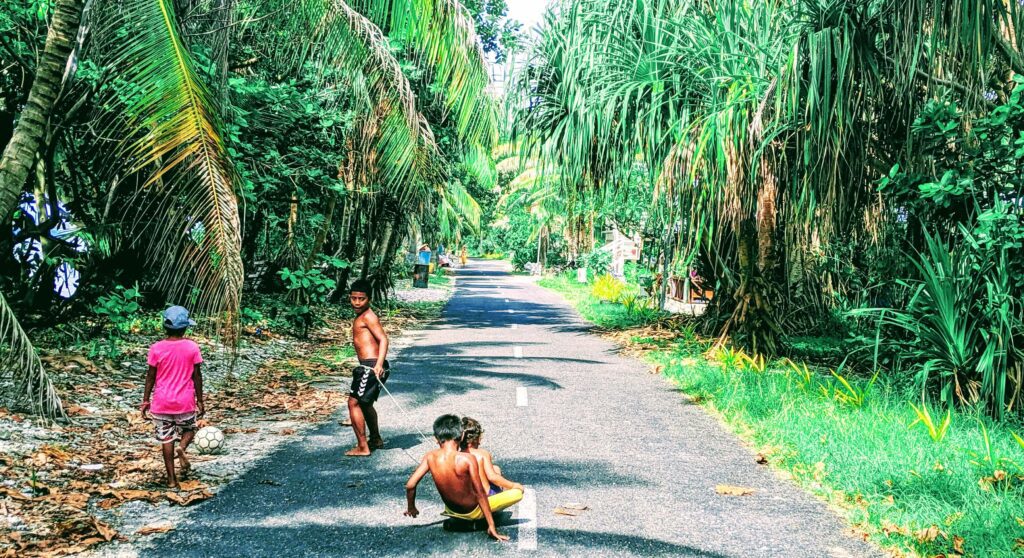
Only about 1,600 tourists visit Tuvalu annually. Most of the visitors are UN workers and not really tourists. It is not an easy place to get to or travel around. The only airport is on the main atoll of Funafuti (airport code FUN). The rest of the islands (known as the outer islands) can only be reached by boat.
Travel to Outer Islands
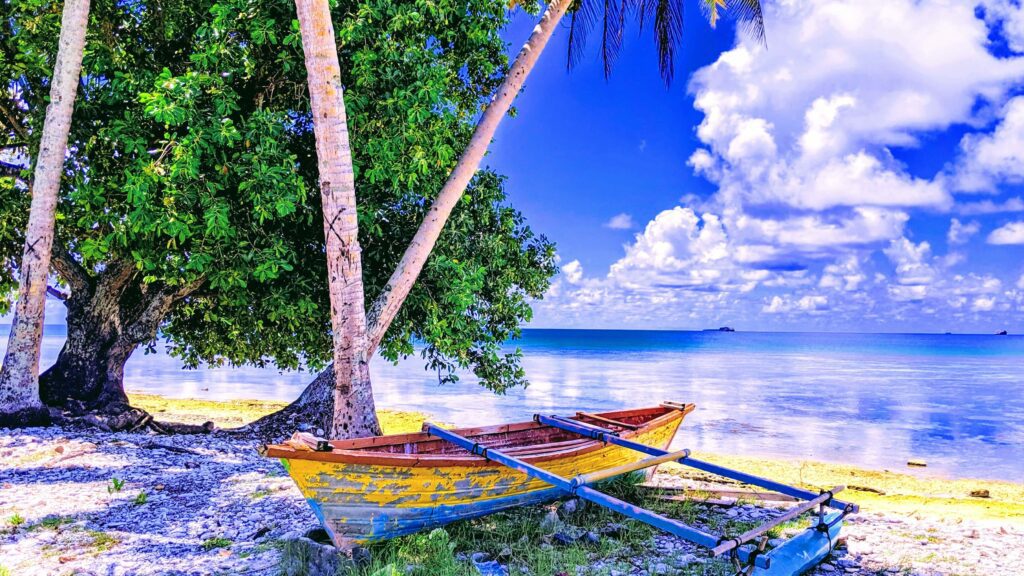
If you plan to travel to any of the outer islands of Tuvalu, consider reaching out to info@timelesstuvalu.com in advance to receive the ship’s schedules. Typically there are 3 ships that depart weekly. Below are some of the routes that you can anticipate:
Northern islands: Nanumea, Nanumanga, Niutao. The ship departs in the morning, reaches the first island within 24 hours. It stays one day on each island, returning to Funafuti around noon of the fifth day.
Central islands: Nukufetau, Nui, Vaitupu. The ship departs late in the evening, reaches the first island in the morning, stays one day on each island, returning to Funafuti in the early morning of the fourth day.
Southern islands: Nukulaelae, Niulakita; The ship departs from Funafuti, stays one day on each island, returning to Funafuti on the third day.
Funafuti
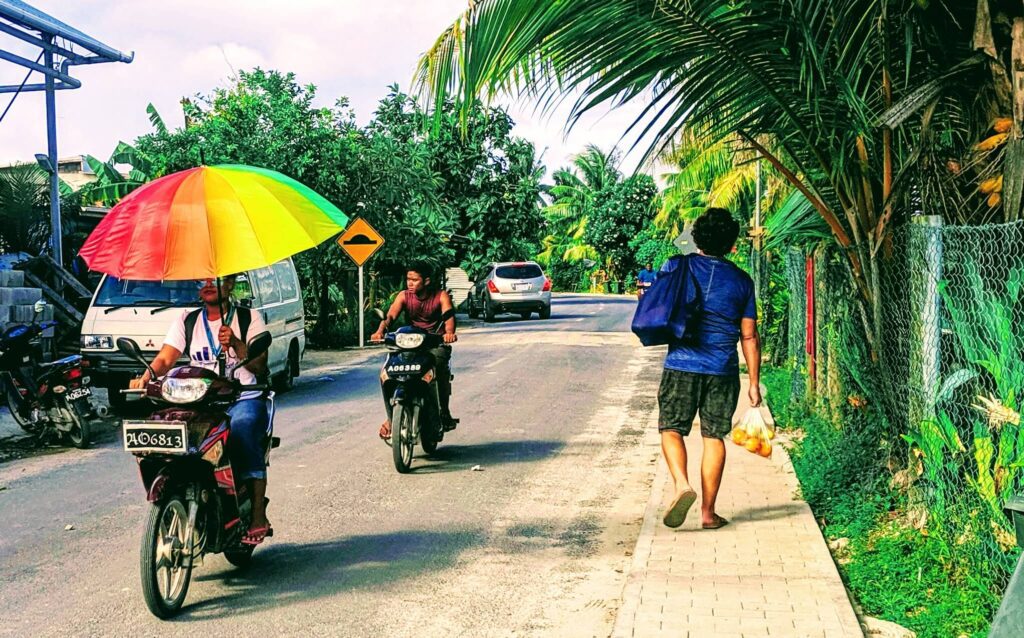
Funafuti is Tuvalu’s most populated atoll. It is where the few tourists visiting this tiny country spend the majority of their time. There are 3 planes that land and take off weekly from Funafuti’s air strip which doubles for the main entertainment area of the island.
The place is very genuine and rustic. There are no hotel chains, just small Guest Homes and a few restaurants. There are some small stores selling mostly canned goods from China.
Things to Do and See in Funafuti
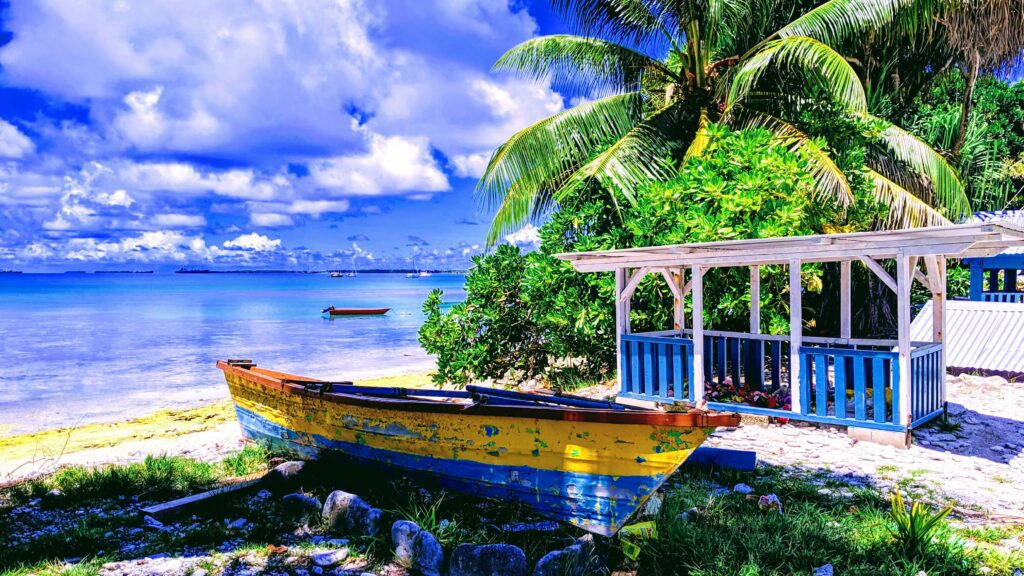
Honestly, there is very little to see and do in Funafuti. However the water away from the denser population is crystal clear and super warm.
Funafuti Conservation Area

Besides Fongafale (the largest of the Funafuti islets), there are about 20 smaller islets in the Funafuti atoll that encircle a large, protected lagoon. Several of the most pristine and uninhabited of these “motu” lie within the Funafuti Conservation Area. Most are quite tiny yet are home to hundreds of nesting seabirds such as black noddies and crested terns.
Endangered sea turtles also nest in the soft white sand of these tiny atolls. Manta rays, colorful coral and tropical fish can be seen swimming in the crystal-clear water offshore. This 30 minute boat ride along with a guide and the entry fee to the conservation area can be arranged at most guest houses. When we were there the cost was approximately $500 AUD for the two of us to go for a few hours.
Fatato and Funangongo Islets
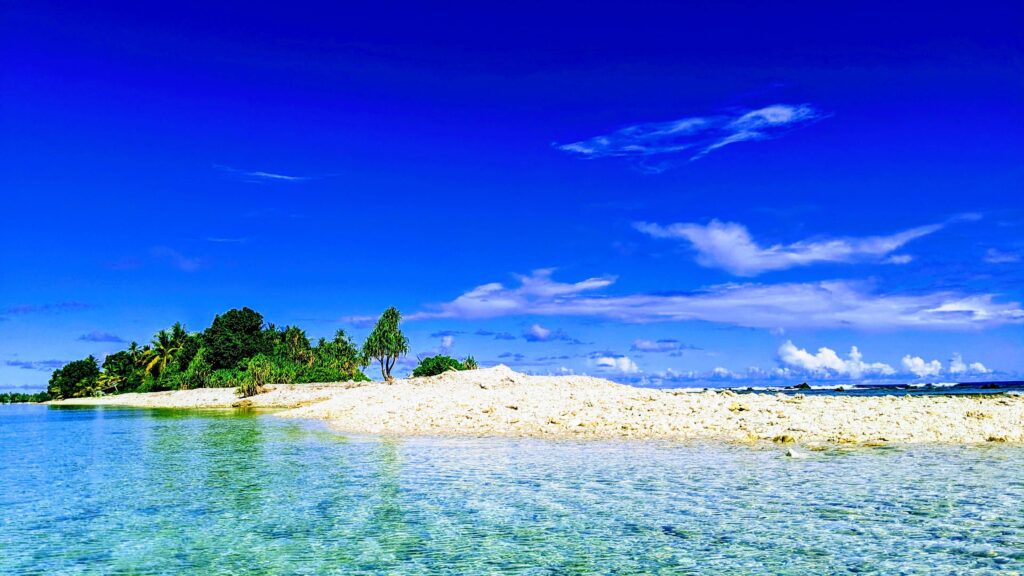
If you want to save some money and still see pristine islets and virgin land, check out the tide schedules and plan a walk south of Fongafale. The next islet south is called Fatato and can be reached at low tide. Along the way stop by and grab some excellent food at the Ocean Pub Bar. They made me a delicious vegan meal while Rob ate fresh seafood.
If you are a good swimmer and time the tides well you can make it down to the next islet called Funangongo. These are untouched uninhabited islets filled with beautiful flora and fauna. These peaceful motus were the highlight of our visit to Tuvalu.
Post Office
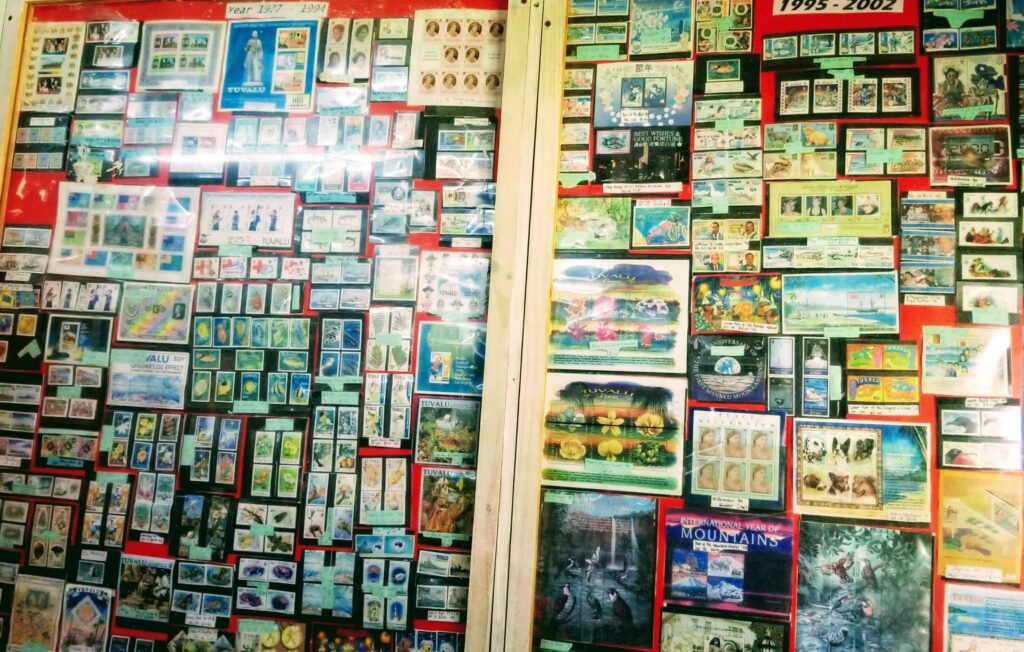
Tuvalu’s Post Office has generated quite a bit of revenue for this tiny country and is worth visiting. This modest small building shows off sheets of rare and beautiful stamps issued for special occasions. There are multitudes of stamps ranging from the 150th anniversary of the American Civil War to Charles and Diana’s royal wedding. Many of these stamps are collectors’ items and are for sale. You can also order stamps online at: www.stampsoftuvalu.com
Airplane Runway

Every afternoon, when the Equatorial sun starts to lose its bite, the place to be is Funafuti’s un-fenced airstrip. Since it is only used three mornings of the week (Tuesdays, Thursdays, Sundays) the rest of the time it is the playground of the people. It serves as a gathering place to walk and talk or play soccer, volleyball or touch football.
It is fun to watch from the grassy sidelines taking in the cooling sea breeze. The prime minister’s residence is located here. It is called the Tuvalu House, where residents are apparently welcome to drop by for a chat with their esteemed leader.
Things to Consider
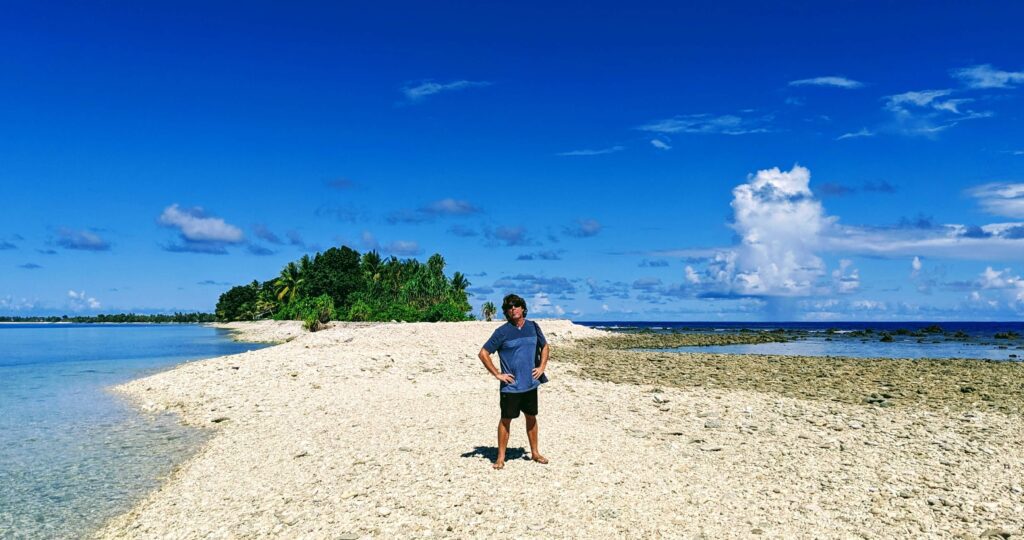
- The hot equatorial sun is relentless. It is above you at all times. Make sure to bring high SPF waterproof sunscreen. It is not sold on the island. I was quite tanned from being in the South Pacific sun for the many months prior, yet still burned here.
- Quick showers and thunderstorms occur often. We would recommend bringing an umbrella for these events as well as against the scorching sun.
- There are no ATMs in Tuvalu. Hotels want to be paid in cash, as do the few stores, restaurants and guides to the Conservation area. They accept Australian currency.
- The best way to get around Funafuti is by walking. It takes between 1.5 and 2 hours to walk the length of this tiny island. However, if you prefer to hire a moped or bicycle, these can typically be rented from your guest house for about $10/day.
- Stores have very few ingredients, so if you have dietary restrictions, consider bringing some mandatory items with you. It is really up to the border folks to decide if you can bring it in or not. We were told that fresh fruit and vegetables as well as animal products were not permitted. I brought vegan bars, vegan protein powder, rice noodles and vegan bullion cubes.
- Most people speak English. They appreciated us saying a few words in Tuvaluan: Hello = Talofa Thank you = Fakafetai Excuse me = Tulou Some other great phrases can be found here.
- Tuvalu is a flat country with an average elevation of 2 meters. It is considered to be the most vulnerable to climate change. We saw virtually horizontal palm trees, due to the sand beneath them being washed away by the rising sea.
- Wifi and data are not reliable in Tuvalu. Sim cards are sold across the street from the airport. However, they work poorly unless you are in that building. Otherwise, don’t expect much connectivity.
- Water is the most precious resource here. There are no streams or lakes, so all rain water needs to be collected.
- FUN FACT: Tuvalu has shown ingenuity by exploiting an interesting source of income. It has sold its internet suffix – .tv – to a Californian company for several million dollars a year in continuing revenue. The company sells the suffix on to television broadcasters.
Is Tuvalu Worth a Visit?
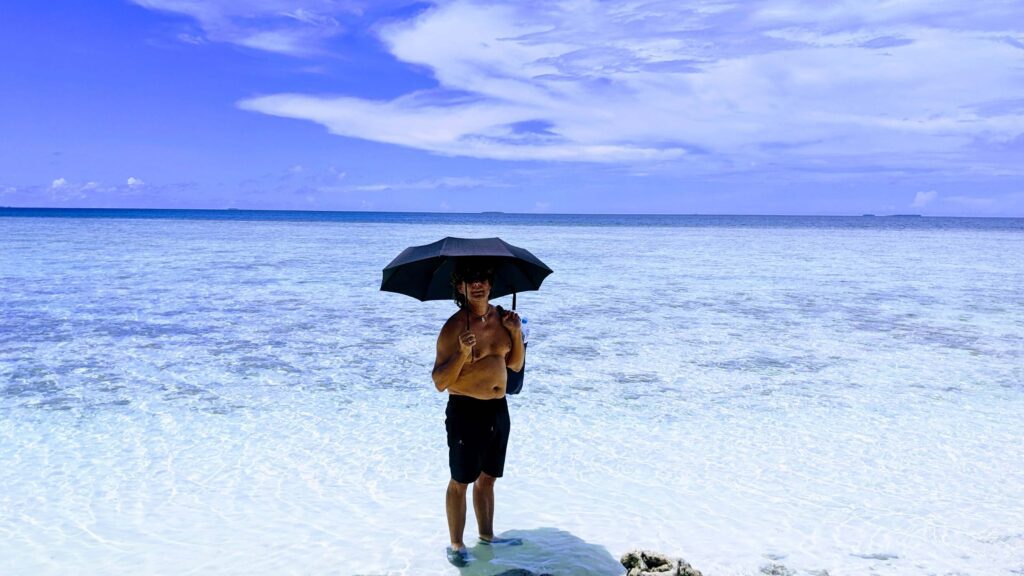
This tiny nation is not your typical tourist destination. There are no luxury or even standard hotels to stay in. No interesting restaurants to enjoy. No easily accessible sandy beaches. No hiking trails to explore. Yet, Tuvalu does have some of the most pristine crystal clear water and remote islets we have ever seen. You just have to get to them.
Would we go back to Tuvalu? No, there are more interesting places to visit like New Caledonia or Kiribas. Do we regret going? No, Tuvalu has shown us a very interesting and remote culture. The imminent danger of climate change is clearly evident here. A palatable reminder that we need to carry with us and consider on a daily basis.
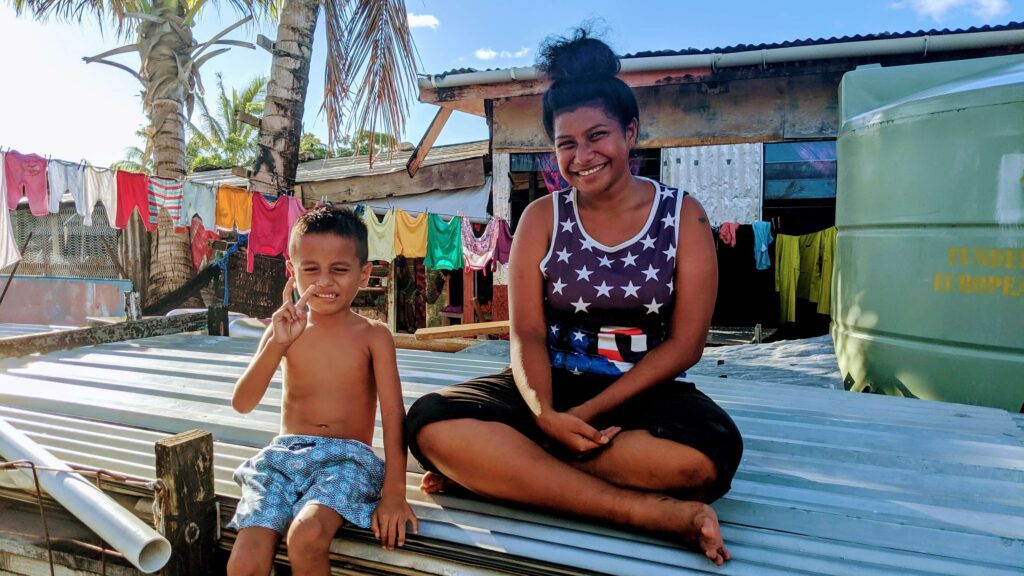
Have you been to this tiny nation? Did you think Tuvalu was worth a visit? Would you consider going? Let us know. We would love to hear from you.

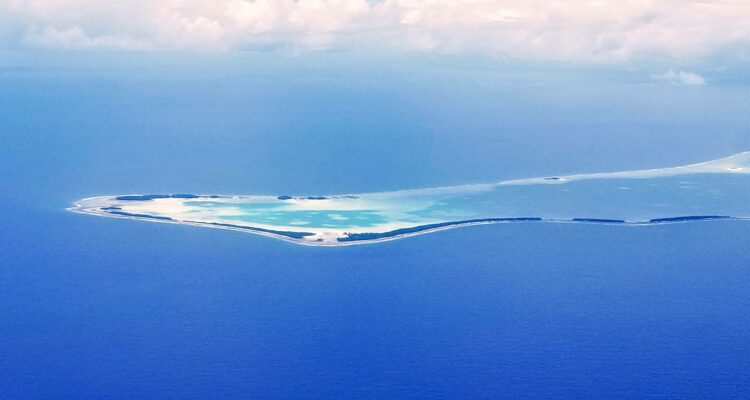
15 Comments
Wow! This place looks idyllic. I would definitely visit once just to see for myself, although I take your point that perhaps its level of interest is quickly exhausted. You do get to some out-of-the-way places!
On my list to visit for 2021! But don’t want to wait that long. Looks so isolated and beautiful!
Thanks so much, Ric! I think you will really enjoy the outer islets of the Te Namo Lagoon and the Conservation Area within it. In my opinion, the trek to the outer islands is not worth it. Just the same as Funafuti – a UN workers kind of place. Let me know if you have any questions or if we can give you any ideas for your planning.
Really great post! There are so many interesting places and I appreciate you are taking us along with you in visiting some of them. Of course I just learned today of “Dancing Pandas” from Rob, and I’m looking forward to hearing more about your adventures 🙂
So great to hear from you, Doug! Thank you for taking the time to read the post and for following along. Many more adventures to follow.
If there’s a random place tucked away in an ocean somewhere, you have been there. I found this fascinating. I’m sure I would tire quickly of the beaches but for a day I would stare in amazement at that water. Another wonderful blog.
Thank you so much for your very kind comments, John. Yes, I think you would definitely get tired of the beaches and most importantly the sun. The sun there is truly relentless. Thanks again, John!
I think it’s worth it to visit a remote place like Tuvalu to visit a Conservation Area. When there is not too many tourists, you can really enjoy the nature and the animals. This place looks beautiful and your pictures are stunning.
Thank you so much for your lovely comments. It was pretty neat to be the only tourists there.
It sounds exactly what I think a remote island should be like. The Post Office looks fascinating and I love that people congrerate on the runway 🙂
Thanks so much, Wendy for taking the time to read the post! Yes, the post office was an odd highlight. So many interesting stamps.
Such an informative and interesting post. So good to hear first hand about a country so remote. Loved the post office and the fact that the .tv prefix has been sold to America. One way to bring in revenue. Thanks for sharing.
Thanks so much for reading, Angela! Glad you enjoyed it!
Enjoyed reading about your trip here, it sounds so remote, and something not many people would experience.
To us, it definitely seems like a visit to Tuvalu is worth a visit, but we will just have to go ourselves to check it out, won’t we? 😉
Awesome! Thanks so much for reading the blog, Kia! Let us know before you go in case we can make some recommendations.